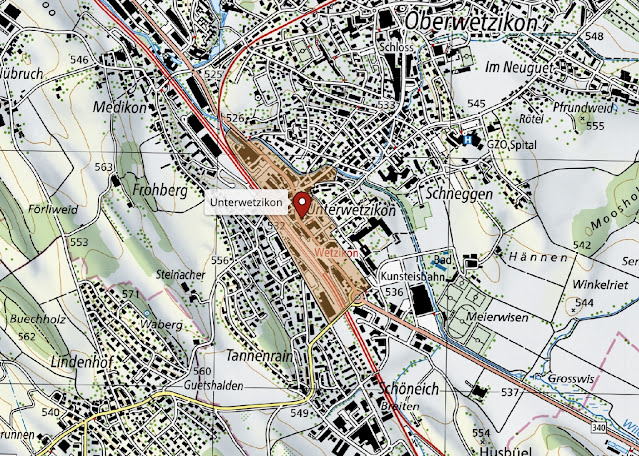Documents related to Johannes Jenta, his brother Johannes Jenta and Felix Jenta:
Child 1: When Johannes Jenta was born on 28 February 1796, in Wetzikon, Zürich, Switzerland, his father, Rudolf Jenta, was 25 and his mother, Lisabeth Freÿ, was 22. He died on 4 October 1796, in his hometown, at the age of 7 months 6 days.
 |
| 1796 Johannes Jenta birth 28 Feb Wetzikon film 008480741 page 83 |
eod(em) = 28. Febr. 1796
Johannes
Rud(olf) Jenat v(on) Etenhausen / Elis(abetha) Freÿ v(on) Birr
Witnesses: Jos(ef) Ernst v(on) Stägen / Anna Kündig. v(on) Wellnau Pf(arr) Bauma
 |
| 1796 Johannes Jenta burial 4 Oct Wetzikon film 008480741 page 307 |
The first two columns are running numbers for males and females.
[1796] Oct. 4 - Johannes
Parents: Rud(olf) Jentas v(on) Etenhausen ehl(ich) geb(orenes) Söhnl(ein) (little son)
- (years) 7 (months) 6 (days) Po(c)k(en) = smallpox
"ehlich geboren" = legitimate
Smallpox was an infectious disease caused by variola virus (often called smallpox virus), which belongs to the genus Orthopoxvirus.[7][11] The last naturally occurring case was diagnosed in October 1977, and the World Health Organization (WHO) certified the global eradication of the disease in 1980,[10] making smallpox the only human disease to have been eradicated to date.[12]
The initial symptoms of the disease included fever and vomiting.[5] This was followed by formation of ulcers in the mouth and a skin rash.[5] Over a number of days, the skin rash turned into the characteristic fluid-filled blisters with a dent in the center.[5] The bumps then scabbed over and fell off, leaving scars.[5]The disease was transmitted from one person to another primarily through prolonged face-to-face contact with an infected person or (rarely) via contaminated objects.[6][13][14] Prevention was achieved mainly through the smallpox vaccine.[9] Once the disease had developed, certain antiviral medications could potentially have helped, but such medications did not become available until after the disease was eradicated.[9] The risk of death was about 30%, with higher rates among babies.[6][15] Often, those who survived had extensive scarring of their skin, and some were left blind.[6 Wikipedia
Child 2: When Johannes Jenta was born in 1797, in Wetzikon, Zürich, Switzerland, his father, Rudolf Jenta, was 26 and his mother, Lisabeth Freÿ, was 23. He was buried in Wetzikon, Zürich, Switzerland. Johannes lived 2 months 6 days and died of Angina.
 |
| 1797 Johannes Jenta 13 August film 008480741 page 85 |
1797 den 13. Aug. - Johannes
Parents: Rudolf Jenta von Etenhausen / Lisab(etha) Freÿ von Birr
Godparents: Lieut(nant) Jos(ef) Ernst von Stägen / Anna Kündig von Welnau
 |
| 1797 Johannes Jenta burial 19 Oct Wetzikon film 008480741 page 308 |
[1797] Oct. 19 - Johannes
Rud(olf) Jentas v(on) Etenhausen ehl(ich) geb(orenes) Söhnl(ein)
aged - / 2 / 6 / Angina
Child 3: When Felix Jenta was born in 1798, in Wetzikon, Zürich, Switzerland, his father, Rudolf Jenta, was 27 and his mother, Lisabeth Freÿ, was 24. Felix lived 1 year 6 months 8 days.
 |
| 1798 Felix Jenta 6 Sep bap film 008480741 page 87 |
eod(em) = 6. Sep. 1798
Felix
Parents: Rud(olf) Jenta v(on) Etenhausen / Lis(abeth) Freÿ v(on) Birr
Witnesses: Felix Hirzel v(on) Unterwez(ikon) / Anna Egli v(on) Grüning(en)
Note: Unterwezikon can be seen more clearly with Ester Weber on 10. Juni.
 |
| Unterwezikon |
 |
| 1801 Felix Jenta burial Mar 14 Wetzikon film 008480741 page 310 |
1801 Mart(ius) 14
Felix
Rud(olf) Jentas z(u) Etenhausen e(hlich) g(eborenes) Söhnli
1. 6. 8. Pok(en)
Cause of death: So Felix died from samallpox, aged 2 year, 6 months, 8 days.
Note: The letter before Etenhausen looks always a bit different - here more like z (for zu), but also like v (for von) - doesn't make any difference, Ettenhausen is always the place of residence.
born 1798 09 06
plus .….. 1 06 08 (as recorded in the burial record above)
= ….. 1799 15 14
= ….. 1800 03 14 …. not 1801 03 14
Kent:If the entry is in 1801, the age should be 2 years 6 months 8 days in the death record. Seeing as the Pastor wrote the entry in 1801, when the death occurred, the year date seems to be in error. Pastor's mistake?
 |
| ortsnamen.ch, small area in the southern part of Wetzikon |
 |
| ortsnamen.ch, small area or field name in the southern part of Wetzikon |
 |
| Julius Billiter temple record. |
Wetzikon:
City and municipality at the southern end of Lake Pfäffiker. The former villages of Oberwetzikon, Unterwetzikon, Kempten and Robenhausen developed in the course of the 20th century. century by continuous development into a contiguous settlement area the size of a city. The southern shore of the Pfäffikersee is rich in important archaeological finds from the Late Paleolithic, the Mesolithic, the Neolithic and the Bronze Age. On the municipal territory there are also burial mounds from the Bronze, Iron and Latène ages. Remains alem. Graves in several places also testify to an early alem. Settlement of the area. The castle above Kempten was in the Hochma. The ancestral seat of the barons of Kempten mentioned from 1223-1392, while the castle located near Oberwetzikon dates back to the barons of Wetzikon, which can be safely grasped from 1229. The settlements of today's municipal area Wetzikon were located from the High Middle Ages in the border area of the three dominions Greifensee (Robenhausen and Robank), Grüningen (Kempten, Ober- and Unterwetzikon) and Kyburg (Ettenhausen).

